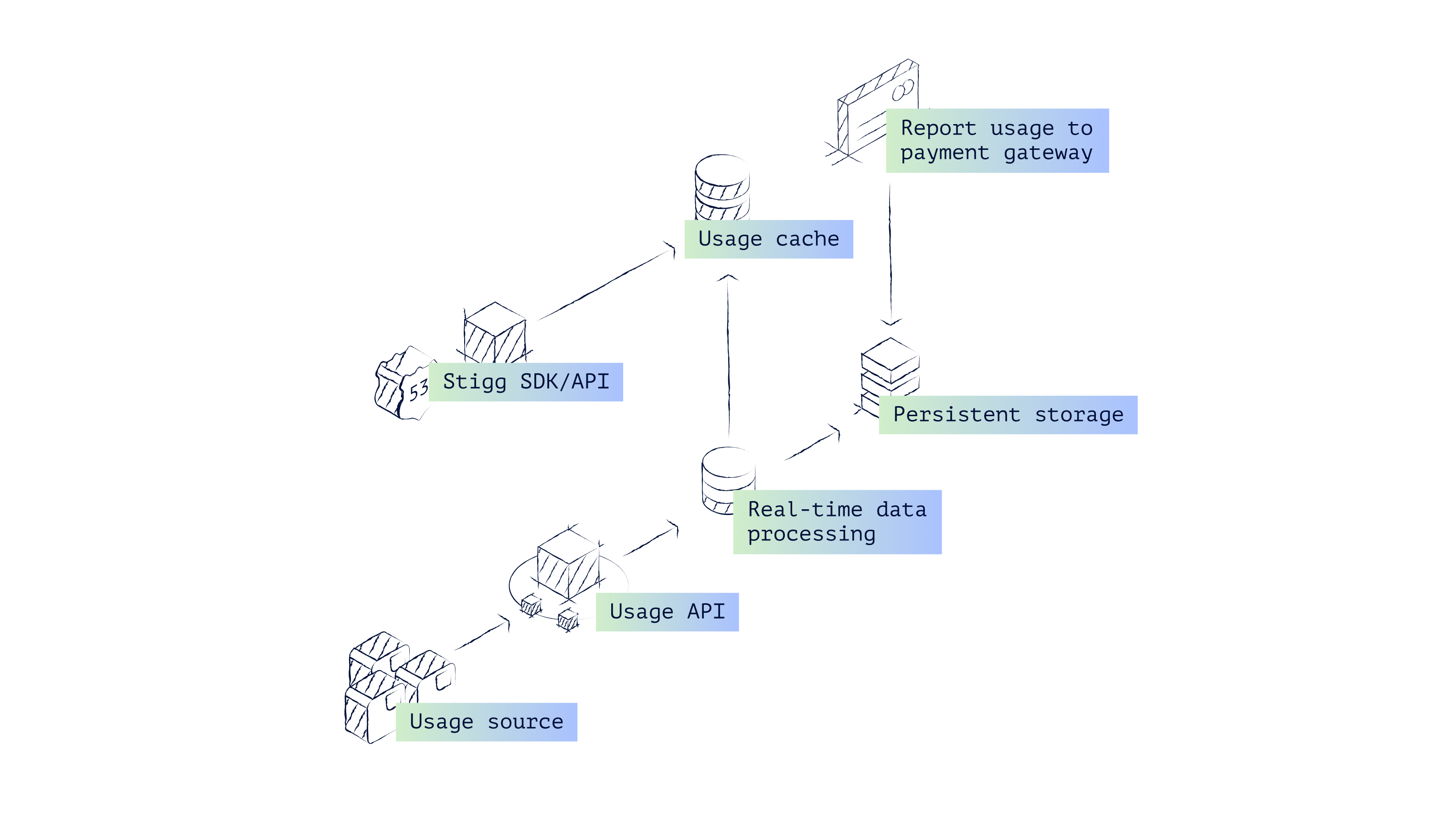
Scalability
Stigg’s metering and aggregation capabilities are designed from the ground up for managing high-volume real-time use cases:- The Stigg API and SDKs allow you to report usage events in batches, with up to 1000 events per batch.
- Usage events can be reported in parallel from multiple distributed reporters without requiring any coordination.
- Built-in idempotency guarantees that duplicate events are only reported once.
- Current usage is accessed from a distributed cache and is automatically replicated across multiple regions.
- Local caching allows you to access reported usage without needing to make a call over the network.
If you’re expected to report more than 1000 events per second let us know.
